Back Sweetening like a Pro
Oftentimes winemakers desire a slightly sweeter product than their fermentations offer. Rather than trying to halt fermentation early, leaving an unknown amount of sugar in the wine, it is a much more predictable and common practice to back sweeten the wines, adding sugar to the dry wine prior to bottling.
Check out our LIVE feed of the class on Facebook for more info!
Back Sweetening White vs. Red Wines
One of the benefits of making your own wine, is being able to create a wine tailored to your specific tastes. Traditional “rules” of dry reds can be forgotten as you create a wine designed for your palate. There are different steps to sweetening red and white wines to ensure success.
Red Wine
- Lysovin:
- An anti-microbial to kill off any remaining MLF bacteria. Only targets gram-positive bacteria such as Lacto-bacillus (not Acetobacter).
- Prevents unfavorable interaction of sorbate and MLF bacteria (can cause geranium taint). Must be applied one week before sorbate and sweetening.
- Use 1.5g/gal hydrated in 10 times its weight in water. Allow to sit for 45 mins.
- Do not stir too aggressively to avoid foaming. Stir into wine gently but thoroughly.
- To calculate 10 times a product’s weight in water:
- Take amount in grams (Y) and multiply times ten (Y x 10=Z)
- Then take Z (in grams) and use an online calculator to convert into pounds.
- Then take Z in lbs and divide by the weight of one gallon of water (Z/8.2 =A) A will be the amount of water needed to hydrate the product.
- Sorbate:
- Potassium Sorbate will help prevent yeast from reproducing and refermenting the newly introduced back sweetening sugar.
- Make sure wine has been thoroughly racked and clarified before applying sorbate.
- Use 1gram/gallon and dissolve in warm water.
- Sulfite:
- It is important to ensure that your sulfite level is up to the suggested ppm for that varietal, contingent on that wine’s pH value.
- Use the sulfite calculator on Winemaker Magazine’s website to determine the correct sulfite concentration contingent upon your wine’s pH.
- Fructose:
- Fructose is the primary sugar found in fruits such as grapes, that is the best for back sweetening to provide a natural sweetness to the finished wine.
- Bench trials should be conducted to discern the level of sweetness preferred by the winemaker.
- Please see the attached sheet for back sweetening bench trial protocols. Once a level has been determined, use the following equation to determine the amount of fructose to be added.
- Amount of gallons x 8.2lbs/gallon = X (weight of wine)
- Use X multiplied by the percentage of residual sugar desired will yield the amount of fructose needed.
- Ex: 100 gallons x 8.2lbs/gal = 820lbs x 2% RS (.02)=16.4lbs of fructose needed.
- Dissolve the sugar in as little hot water as possible. Mix into the wine via vigorous stirring or during a pump over.
White Wine
- Sorbate:
- Potassium Sorbate will help prevent yeast from reproducing and refermenting the newly introduced back sweetening sugar.
- Make sure wine has been thoroughly racked and clarified before applying sorbate.
- Use 1gram/gallon and dissolve in warm water.
- Sulfite:
- It is important to ensure that your sulfite level is up to the suggested ppm for that varietal, contingent on that wine’s pH value.
- Use the sulfite calculator on Winemaker Magazine’s website to determine the correct sulfite concentration contingent upon your wine’s pH.
- Fructose:
- Fructose is the primary sugar found in fruits such as grapes that is the best for back sweetening to provide a natural sweetness to the finished wine.
- Bench trials should be conducted to discern the level of sweetness preferred by the winemaker.
- Please see the attached sheet for back sweetening bench trial protocols. Once a level has been determined, use the following equation to determine the amount of fructose to be added.
- Amount of gallons x 8.2lbs/gallon = X (weight of wine), Use X multiplied by the percentage of residual sugar desired will yield the amount of fructose needed.
- Ex: 100 gallons x 8.2lbs/gal = 820lbs x 2% RS (.02)=16.4lbs of fructose needed.
- Dissolve the sugar in as little hot water as possible. Mix into the wine via vigorous stirring or during a pump over.
Bench Trials for Back Sweetening
- Preparation of solution for bench trials:
- Dissolve 40gm of Fructose into distilled water so final volume is 200ml
- 100ml of solution contains 20gm Fructose which will raise RS of a gallon of wine by 1%
Bench testing:
- 50ml sample:
- 13ml = 0.1%
- 65 ml = 0.5%
- 3ml = 1.0%
- 100ml sample:
- 26ml = 0.1%
- 3 ml = 0.5%
- 6ml = 1.0%
- 375ml sample:
- 0ml = 0.1%
- 0 ml = 0.5%
- 0ml = 1.0%
- 750ml sample:
- 0ml = 0.1%
- 0 ml = 0.5%
- 0ml = 1.0%
The Winemaker’s Think Tank: Vol 37 – “How do I make Rose?”
What’s the Winemaker’s Think Tank?
Every Thursday we will post about a few frequently asked questions that our winemaker has answered. If you have a winemaking question you would like to have answered, please email us at support@juicegrape.com and we will try to get into next week’s post. Cheers! 🙂
How do I make Rose?
There are a few different approaches to making rose wines. The most traditional way is to crush red grapes, leave the juice in contact with the skins for a limited amount of time, then press off the juice rather quickly (within a few hours) to yield a deep pink colored juice. Once this juice is fermented, it will yield a rose wine. The best grapes to use for this type of production would be any red varietal with a higher acidity. Early picked red grapes or a very fruit forward varietal tend to make the best roses. Some varietals that we have worked with successfully to make beautiful roses are Barbera, Grenache, Gamay, Chambourcin, and Pinot Noir.
Another approach would be to take a white wine and to add a small portion of red wine to it, predominantly for body and color. A very small amount of red wine will provide adequate color to change a white wine into a rose color. A small amount of prep work needs to be done before the blend is created. If the red wine was put through malolactic fermentation, the MLF must be complete before the wine is added into the white wine. If the red wine has not completed MLF, it cannot be used to blend as the bacteria will begin to metabolize the malic acid within the white wine. To prevent this, first make sure that the wine has completed MLF, then add Lysozyme to prevent the further proliferation of bacteria. It is always imperative to make sure that the wines have also been adequately sulfited prior to blending as well. It is very important to do bench trials of the blends before the addition of the red wine to ensure the desired results. A small amount (5-10%) of the red wine will add a nice touch of color and body to a white wine, creating a beautifully blended rose.
We hope this information helps with your winemaking. If you have any follow up questions or winemaking questions in general, please email us at support@juicegrape.com.
The Winemaker’s Think Tank: Vol 35 – How do I know if fermentation is complete?
What’s the Winemaker’s Think Tank?
Every Thursday we will post about a few frequently asked questions that our winemaker has answered. If you have a winemaking question you would like to have answered, please email us at support@juicegrape.com and we will try to get into next week’s post. Cheers! 🙂
How do I know if fermentation is complete?
It is often easy to see visual signs of fermentation: from activity in the airlock, bubbles, and the formation of a cap to the aromas of yeast and carbon dioxide, the wonders of fermentation are succinct observation. But how does the home winemaker know when the fermentation is complete? The simplest way of seeing if fermentation is complete is to taste the wine and observe if there is any sweetness to it. If there is still sugar that you can taste, the yeast have not yet completed their job. The most accurate and scientific way of seeing if fermentation is complete is to take a measurement of the Brix via a hydrometer. A hydrometer is a glass instrument that reads sugar content via the hydrometers buoyancy in wine juice. The juice sample should always be placed into a sanitary, cylindrical shaped vessel. As the wine ferments, yeast consumer sugar and excrete alcohol, making a thinner, less dense liquid. At the beginning of fermentation, the hydrometer will not sink very far into the wine. The sugars within the juice make it thicker and the hydrometer will float on top of the juice. As fermentation progresses the new wine becomes less dense and sugary, allowing the hydrometer to sink down into the liquid. When the fermentation is complete, the hydrometer will sink down into the liquid to the 0 mark, if not farther. When reading the hydrometer, spin it slightly in the cylinder to dislodge any bubbles that may cling to the sides of the hydrometer. Observe where the meniscus of the wine falls on the gradients of the hydrometer. This will give you your sugar level in degrees Brix of the fermenting wine. When the hydrometer sinks to zero or below, the fermentation is complete and you can rack the wine.
We hope this information helps with your winemaking. If you have any follow up questions or winemaking questions in general, please email us at support@juicegrape.com.
Wine Class Schedule
We have a bunch of classes coming up! Make sure to RSVP via Facebook or Sign Up via the website!
Saturday September 23rd: Common Winemaking Mistakes (FREE) at 10:00AM – RSVP by clicking HERE
Saturday September 30th: Winemaking 201 – Winemaker Lab Skills ($75.00) at 10:00AM – sign up by clicking HERE
Saturday October 7th: Winemaker Bootcamp ($150.00) at 9:00AM – sign up by clicking HERE
Winemaker Spotlight: Greg Ambrose
My wine passion started 17 years ago when my father officially started to teach me to make wine. He had tried unofficially in the early 70’s but I was a reluctant 7 year old with other things on my mind. I began making wine from grapes with a friend and we started with a single 30 gallon barrel. We picked up grapes from a local distributor and worked out of my friends single car garage (half full of lawn tools).
We spent the next 9 years trying to source better grapes, each year looking to step up in quality. And then the Musto team contracted with the Lanza family which made a tremendous improvement in the quality of our wines. I still search for higher quality grapes but have come to the realization that we are now working with the best possible fruit available.
Our coop now consists of 7 families and we have outgrown the single car garage. We moved production to my double car garage which has been converted to our crush pad and fermentation room. The garage has been insulated, painted and new lighting and an exhaust system installed. The Musto family now ships us over 5 tons of grapes each fall.
We receive grapes and clean all our equipment on day 1 and crush the grapes on day 2. Crush day is filled with music, great food, wine, more food then more wine. It’s truly Christmas, New Years and the Super Bowl all rolled into one! With a lot of hands to help, we run a sorting table to clean the grapes and then load the crusher destemmer. We ferment in 15- 500 liter tubs and produce around 350 cases of wine. The tubs completely fill the garage and after a short cold soak they ferment for about 10 days. We usually order 6-7 varieties with each family making their own blends we end up with 10-15 wines styles.
Mid day the 30 of us stop working and sit down for lunch. It’s always at a single long table and we eat as one big family. This has become an important tradition with family and friends and includes toasts and short speeches and plenty of laughter. It’s a very special day and it actually gets me emotional even to write about it.
Pressing two weeks later is another story. It’s takes us two full days to press and then deliver the wine to each of the seven homes. Using pickup trucks, food grade drums, pumps and long hoses, we deliver wine to each house in the same way oil deliveries are made. We pump the wine down into each cellar and fill the barrels at each house. It’s more of a working weekend than crush day but we still mange to fit in great food and great wine. After making delivery runs we assemble back at the crush pad/garage for clean up. The day always ends up with a post event review. With more food and wine, we talk about how things went this year and suggestions for improvements to our process that we might make next year. Usually there is robust conversation about who stood out as an MVP and they receive an ovation.
The Musto and Lanza families are fantastic partners and we consider them part of our family.
Want to be featured in the “Winemaker Spotlight” series? Send Christina an email with a description about your harvest traditions and photos of your winemaking cellar to cmusto@juicegrape.com to be featured!
The Winemaker’s Think Tank: Vol 23 – How do I test for Acid?
What’s the Winemaker’s Think Tank?
Every Thursday we will post about a few frequently asked questions that our winemaker has answered. If you have a winemaking question you would like to have answered, please email us at support@juicegrape.com and we will try to get into next week’s post. Cheers! 🙂
How do I test for Acid?
When testing for acidity in wine, you are looking for the Total Acidity value, or the amount of acids in grams per liter of wine. While this may sound complex, it will help you in achieving a proper balanced flavor in your end product. You will need a few basic lab supplies: a test tube, a small 10ml graduated syringe, phenalthalein, sodium hydroxide. Draw a 15ml sample of the wine to be tested into the test tube. Add three drops of the phenalthalein. Swirl the drops around in the wine to mix it in thoroughly. (Note: When using sodium hydroxide, be very careful. It is a strong base that can cause burns. We suggest wearing eye and skin protection.) Using the 10 ml graduated syringe, slowly drop in the sodium hydroxide by .5ml at a time. Every drop, swirl the test tube contents to mix and observe any color reactions. Upon adding the drop, you will see an immediate color change, that will then dissipate. For white wines, you will observe a pink color and for red wines you will observe a grey color. Keep repeating the process of adding a drop, swirling and observing until the color change is permanent. The amount of sodium hydroxide used, when the color change is permanent, will give you the Total Acidity. If 6ml of Sodium Hydroxide are used, then the wine contains .6% or 6g/L of TA.
We hope this information helps with your winemaking. If you have any follow up questions or winemaking questions in general, please email us at support@juicegrape.com.
The Winemaker’s Think Tank: Vol 22 – Seven Most Common Winemaking Mistakes
What’s the Winemaker’s Think Tank?
Every Thursday we will post about a few frequently asked questions that our winemaker has answered. If you have a winemaking question you would like to have answered, please email us at support@juicegrape.com and we will try to get into next week’s post. Cheers! 🙂
Seven Most Common Winemaking Mistakes
1. Headspace – When making wine, it is imperative that any vessel being used is filled completely. Filling carboys, demijohns, or fixed capacity tanks to the highest level possible, minimizing any air space it very important to prevent oxidation. If using a barrel, the barrel will allow for some evaporation as the wine ages. It is critical to top of the barrel with additional wine as this will prevent the oxidation of the wine in the barrel. Barrels do promote a small amount of oxidation, referred to as micro-oxidation, which is helpful at creating a creamier mouthfeel and promoting the expression of fruit flavors and aromas. If a large headspace develops due to evaporation, this can cause severe oxidation in the wine.
2. Degassing– Carbon dioxide gas is a byproduct of the yeast during alcoholic fermentation. Often times the bubbles of SO₂ are so small, they get trapped by the weight of the wine. If the wine is not purposefully degassed, the bubbles may come out of solution in the bottle, resulting in a fizzy wine for the drinker. The degassing process is relatively simple. One may purchase a degassing tool that is attached to a cordless power drill and stirs the wine at a high speed, agitating it and releasing the trapped bubbles. The winemaker can also splash the wine while racking, agitating the wine and releasing the trapped bubbles of gas. As long as the wine has been stirred vigorously, the gas should dislodge and escape, ensuring that it will not be fizzy in the bottle.
3. Sanitation – This may be the most important step in all of winemaking. While cleaning and sanitizing may be a tedious and time consuming process, it is critical to ensure a healthy, long lasting wine. There are an assortment of cleaning agents (B-Brite, Soda Ash, Sterox) that are excellent at cleaning wine making equipment and removing stains. These products need to be rinsed off thoroughly and should be thought of as “soap” rather than sanitizer. After the equipment has been washed and well rinsed, it must then be sanitized with potassium metabisulfite. A solution of 2 ounces of sulfite powder, dissolved into one gallon of water, will yield a strong sanitizing solution that will kill off any microbes that could spoil the wine. This will ensure the longevity of the wine in the aging vessel or bottle.
4. Bench Trials – When using a fining agent or oak additive to your wine, it is very important to first conduct a small trial of the product, before adding it to the entire batch. Assess the addition rate for the compound you would like to add to the wine. Using that as a guide for your ratio, pull out a small amount of the wine and add the compound, making sure that the ratio is accurate for that size sample. Allow the sample to sit for a few days and try it. If the results are what you were striving for, then you can apply the compound to the entire batch. This will help save you time and money if you are not satisfied with the results of the bench trial and will help you most effectively improve your wine.
5. Sulfites – Sulfites are a naturally occurring compound within wine. While sulfites do exist naturally, they are at a low level, not sufficient for helping to preserve the wine as an antioxidant. Additional potassium metabisulfite must be added to help prevent oxidation as well as prevent any advantageous microbes from growing in the wine. If the winemaker neglects to add sulfites to the wine, it will easily oxidize and could also be susceptible to bacterial contamination.
6. Record keeping – Often times with winemaking, “the devil is in the details”. The smallest change in yeast strain, nutrition, and grape acid and sugar content, can have dramatic effects on the resulting wine. The best winemakers, on the home or professional level, take meticulous notes on all of their activities and observations. By keeping track of each step of their process, they are able to reproduce their very best wines and also do research on what went wrong with their failures.
7. Timing – It is said that timing is everything. This is particularly true for winemaking. Many folks assume after fermentation, they can just leave the wine alone to age and it will come out beautifully if untouched. This is not the case. The wine needs to be maintained with racking and sulfites to ensure its longevity. Sometimes in winemaking, a fault may develop, Rather than researching a way to fix the fault or seek some professional advice, some winemakers elect to do nothing and hope the fault goes away. Often times, these faults progress and get worse. If caught early, they can be easier to fix.
We hope this information helps with your winemaking. If you have any follow up questions or winemaking questions in general, please email us at support@juicegrape.com.






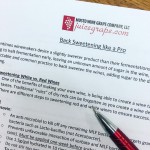

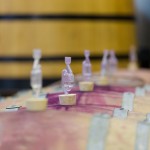
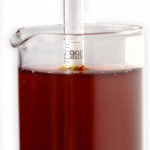

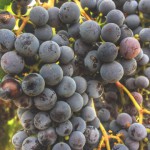
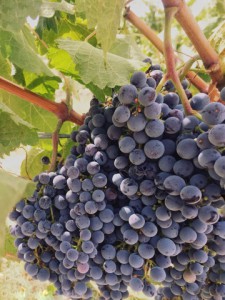

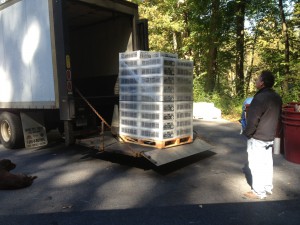
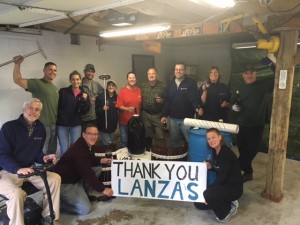
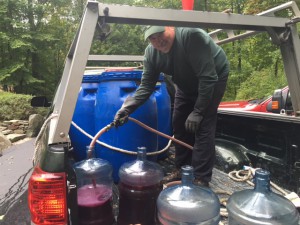
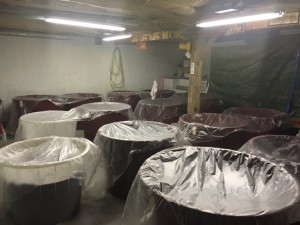
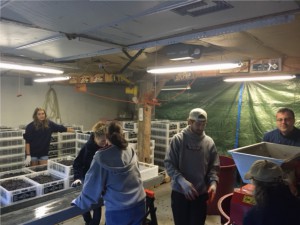
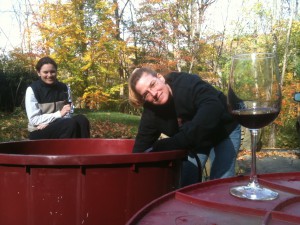
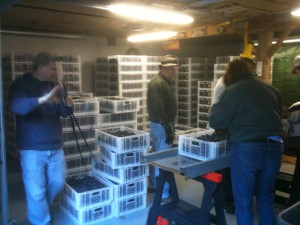


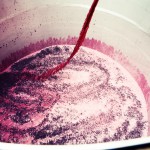
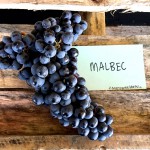
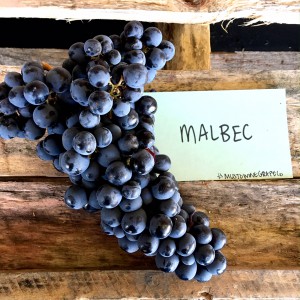
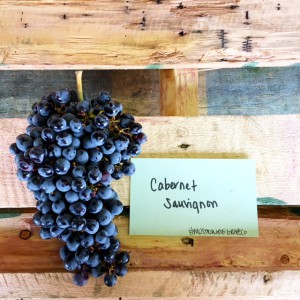
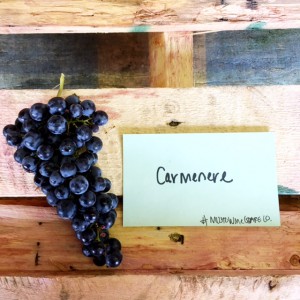
Recent Comments